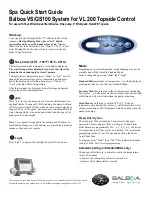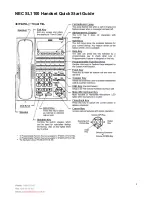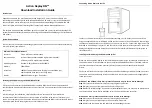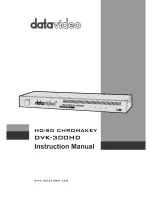
2019/10/07
Operating manual/BEAROMOS 2020/Version 1.0
Page 10 of 26
3
Product description
The engines/gears/etc. for which the BEAROMOS is intended have slide bearings in which oil is pressed
between the bearing shell and the bearing point by a pump. As a result, the bearing point of the rotating
shaft is lifted off the bearing shell, so that there is no longer any contact between the bearing journal and
the bearing shell. The bearing then operates outside the mixed friction range. If the lubricating film is
interrupted by an operating state or defect, the temperature increases due to friction between the
bearing shell and the rotating shaft. Given the large mass of the rotating shaft, the bearing shell sees a
greater temperature increase, resulting in an electrical voltage between the bearing shell and the rotating
shaft due to the Seebeck effect. This voltage is detected by our BEAROMOS device.
The BEAROMOS signal is used to display the status of the monitored bearing(s). It is possible to infer
from the signal level and the associated speed whether the friction is hydrodynamic or mixed. If the
bearing is
operating in the hydrodynamic friction range, there is no indication of wear, deformation or
damage from the friction itself. (However, wear, deformation or damage may occur or arise without the
lubricating film having first been affected or interrupted). If the bearing is exposed to mixed friction for a
longer period of time, this can cause damage to both the bearing and the rotating shaft, which - in the
case of the rotating shaft - means substantial downtimes/repair times and therefore considerable cost.
As a basic principle, a
distinction must be made between three mechanisms of damage:
1.
Wear
2.
Wear and deformation
3.
Thermally-induced damage
The Chart view can be used for further analysis and to identify the relevant mechanism of damage.
However, not every mixed friction state is always an error criterion, just as not every error is reflected in
or indicated by
a mixed friction state. During run-up phases, changes of load, etc., mixed friction very
commonly occurs in the bearings, but this is a normal operating condition. The final analysis of the
BEAROMOS signal is the responsibility of the operating company on site. If there are several bearing
points, the BEAROMOS sensor records a cumulative signal across all thermoelectric voltages of the
bearing points. It is not possible to link a
signal directly to a single bearing. The sensor and the
BEAROMOS signal are therefore only a tool for detecting wear, deformation and damage.
The sensor is contacted at the free shaft end with a customer-specific adaptation. By contacting the
shaft end on the outside of the machine housing, it is not necessary to interfere with the inside of the
machine.
The sensor indicates irregularities such as friction, wear or deformation in the area of the bearings, which
in many cases makes it possible to take measures to avoid major damage. Monitoring with this sensor
unfortunately does not offer complete certainty that irregularities will be detected in all cases in time
and/or that damage will be avoided.











































